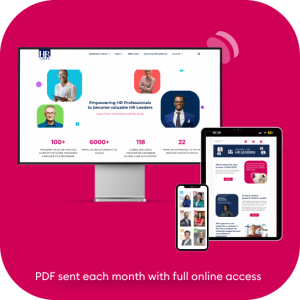When a workplace accident occurs, the period that follows can be turbulent and fraught with challenges – not just for the affected employees but also for the HR professionals tasked with supporting them.
Employing strategic measures can help create a supportive environment. This response reassures employees about their value within the company and ensures their swift return to well-being.
So, let’s explore the strategies that HR can use to support employees after unfortunate workplace accidents.
Foster Open Communication
Following a workplace accident, establishing open communication with the injured employee/s is paramount.
HR professionals should initiate dialogue with the affected employee and their team members. This involves not just conveying sympathy and concern but also gathering details about the incident and its impact.
It’s essential to keep all communications clear, empathetic, and consistent. For instance, regular updates on the recovery process and any changes to work duties or benefits can significantly ease an employee’s concerns.
Moreover, providing a channel for feedback allows HR to adjust support measures as needed, making sure they are both effective and appreciated by those impacted.
Navigate Workers’ Compensation and Benefits
Understanding and effectively managing workers’ compensation claims is crucial for HR in the aftermath of a workplace accident. HR professionals should be well-versed in the relevant procedures and benefits, ensuring that affected employees receive accurate information promptly.
It’s critical to guide employees through the process of filing claims – explaining what benefits they are entitled to, how to complete paperwork accurately, and what timelines they might expect.
Furthermore, employees may be pondering concerns such as “whether your employer can fire you for filing a working compensation claim?” So, HR professionals should help to put such concerns to rest.
Additionally, HR can serve as an intermediary between the employee and insurance providers or legal representatives if required. This proactive involvement not only streamlines the process but also demonstrates the organisation’s commitment to employee welfare.
Address Potential Discrimination and Ensure Fair Treatment
After a serious workplace accident, there’s a potential risk that the affected employee might face unintended discrimination or feel marginalised. HR must actively work to prevent such outcomes by educating the workforce about disability rights and fostering an inclusive culture.
Implementing sensitivity training sessions can enlighten staff on the challenges that colleagues may face during their recovery and reintroduction to work. Moreover, HR should monitor any changes in interactions between employees to swiftly address potential issues of unfair treatment.
This vigilant approach not only protects the organisation from legal repercussions but also reinforces a supportive community ethos that values every member’s contribution irrespective of their physical condition post-accident.
Provide Long-Term Support
Continued support is essential for the complete rehabilitation of employees who have suffered workplace accidents. HR should consider developing personalised return-to-work programs that accommodate the specific needs and limitations of recovering employees. This might involve modified duties, flexible working hours, or even ergonomic adjustments at the workplace.
Collaborating with healthcare providers to understand the necessary support can optimise recovery and integration processes.
Furthermore, implementing regular check-ins not only tracks progress but also keeps communication channels open, allowing for ongoing adjustments to support plans as needed.
Such thoughtful planning ensures employees feel valued and supported throughout their recovery journey.
Evaluate and Refine Safety Protocols
An essential aspect of supporting employees after they have had an accident is reviewing and enhancing existing safety protocols to prevent future incidents.
HR should lead a thorough investigation into the causes of the accident, collaborating with safety officers and management to identify lapses in safety measures. This review can inform necessary changes or additions to safety training programs, equipment upgrades, or modifications to operational procedures.
By actively involving employees in these discussions – soliciting their input and addressing their concerns – HR underscores its commitment to a safe workplace. Enhancing these protocols not only prevents similar occurrences but also builds trust, showing that the organisation learns from its incidents and values its workforce’s safety.
Build Resilience Through Policy and Practice
It’s crucial to build resilience through robust policy frameworks and enlightened HR practices. This involves not only responding reactively to accidents but also preparing proactively through comprehensive health, safety, and wellness policies.
HR should work on crafting policies that embrace flexibility, support mental health initiatives, and stress the importance of a balanced work-life environment. Training programs that reinforce these principles among management levels ensure that supportive measures are not just written guidelines but active practices.
Cultivating this environment enables employees to feel secure and understood, facilitating not just recovery but also fostering a strong sense of loyalty and belonging within the company.
Leverage Technology for Enhanced Support
In this digital era, harnessing technology can significantly enhance the support provided to employees recovering from workplace accidents. HR can implement specialised software tools that manage and monitor individual recovery and return-to-work plans effectively. For instance, apps that schedule therapy sessions, track progress in rehabilitation, or remind employees of necessary medical check-ups can be invaluable.
Moreover, virtual platforms can facilitate remote working arrangements or virtual meetings with healthcare professionals, which are especially beneficial for those facing mobility challenges post-accident.
By integrating these technological solutions, HR not only streamlines administrative processes but also provides continuous and personalised support to injured workers as they navigate their recovery paths.
The Bottom Line
The role of HR in supporting employees after a workplace accident is multifaceted and essential for fostering a positive and supportive work environment. Each step taken not only aids in the recovery of the affected employee but also strengthens the overall organisational culture.
Here’s a quick recap:
- Foster Open Communication. Initiate transparent and empathetic dialogue post-incident.
- Navigate Workers’ Compensation and Benefits. Guide employees through claims with clarity and support.
- Address Discrimination and Ensuring Fair Treatment. Educate and monitor to maintain an inclusive workforce.
- Provide Long-Term Support. Develop personalised recovery programs with flexible adaptations.
- Evaluate and Refine Safety Protocols. Review safety measures to prevent future accidents.
- Build Resilience Through Policy and Practice. Embed proactive health and safety policies into daily practice.
- Leverage Technology for Enhanced Support. Utilise digital tools to better manage recovery processes.
By integrating these strategies, HR departments can significantly improve how they support injured employees, ultimately leading to quicker recoveries, satisfied workers, and a safer workplace.
Guest writer.













